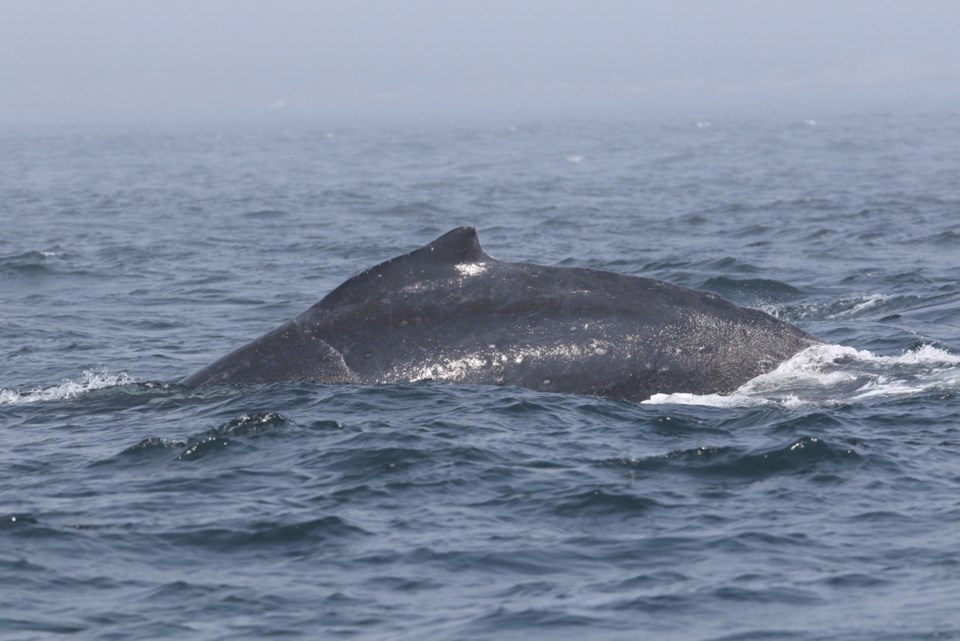A whale-watching company believes it has found the humpback whale struck by one of its Zodiacs near Race Rocks on Monday.
Prince of Whales Capt. Mark Malleson returned Tuesday to the collision site and photographed a lone humpback that he is “fairly certain” is the whale that suddenly appeared and collided with the boat.
“It looks as though it may have a minor scar on its left side ahead of its dorsal fin, which jives with the [Zodiac] master’s feeling that it was hit on its left side,” Malleson said in a statement.
He said the animal was behaving normally.
“I watched it roll around in some kelp south of Great Race and then work its way west on a regular dive pattern of four breaths followed by a longer fluking dive of five or six minutes.”
The whale was also spotted after the collision on Monday by another Prince of Whales vessel. This was the first whale collision in the company’s 22 years of business.
The Zodiac was carrying 11 passengers. The collision sent two people to hospital — one was not released until Saturday.
Company operations manager Ben Duthie said he knows that the public is anxious to hear of the whale’s welfare.
“Although we cannot prove with 100 per cent certainty that this is the animal that was struck on Monday, multiple verifiable sources believe it to be,” he said in a statement.
As for the man who spent five days in hospital, Duthie said he is “in great spirits, resting and recovering.”
Prince of Whales documentation of the incident includes two photographs Malleson took Tuesday of a humpback identified as BCY0785 in the Department of Fisheries and Oceans catalogue.
Malleson has identified more than 200 humpbacks in his 21 years on the Salish Sea and also works on contract with the Center for Whale Research in Friday Harbor, Washington.
Humpbacks are identified by their colouring and patterns of black and white on the underside of their tail flukes, Malleson said.
“The pigmentation varies for each and every one.” Their flukes also have distinctive jags and ridges. The DFO identifier codes starting with BC are followed by an X, Y or Z, corresponding to the amount of white on the flukes: less than 20 per cent white, 20 to 80 per cent white, and 80 to 100 per cent white.
It’s very difficult to determine whether humpbacks are male or female, Malleson said.
Orcas, for example, are easy to distinguish: Males are larger than females and have much taller dorsal fins.
Female humpbacks, however, can be larger than their male counterparts, and there are not significant differences in fins. That means the presence of a calf is a major signal that a whale is female.
The comeback of humpbacks in the Salish Sea is significant compared to the struggling orcas, with Malleson photographing almost 50 new humpbacks this year.
Members of the Pacific Whale Watch Association will be keeping an eye out at whale-watching sites for the humpback that was hit, giving it a wider berth and documenting its behaviour, Duthie said.
Under Canadian guidelines, boat operators must stay at least 100 metres away from whales.



